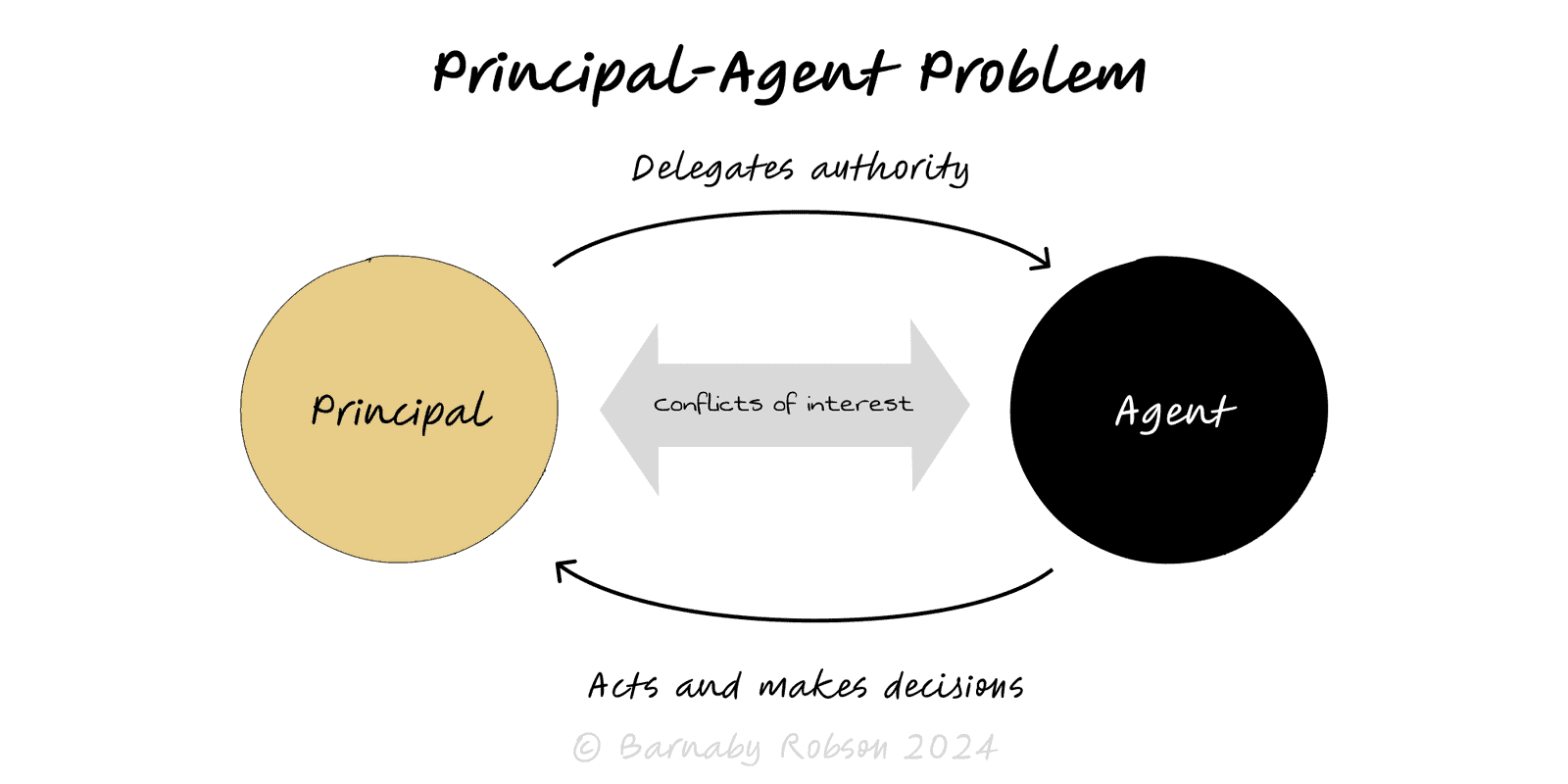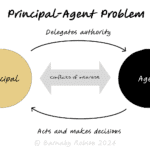Principal-Agent Problem
Economics/contract theory (Jensen–Meckling; Akerlof; Holmström)

This shows up any time one party acts on another’s behalf — executives for shareholders, sales reps for a firm, contractors for clients. Agents know more about their actions than principals do, and they optimise for their own payoff. The model gives simple levers to close that gap: incentives, visibility, risk-sharing, and selection.
Different goals – pay, status, workload vs long-term firm value.
Information gaps – agent effort/quality is hard to observe.
Hidden action – risk-taking or shirking after the deal (moral hazard).
Hidden info – weak agents/projects select into rich terms (adverse selection).
Horizon & risk mismatch – short bonuses vs long outcomes; agents bear undiversified risk.
Metric distortion – pay one KPI, get that KPI (and collateral damage).
Executive & sales compensation – equity/vesting, quota design, clawbacks.
Asset management – GP–LP fees, carry, high-water marks, hurdles.
Franchising & platforms – brand standards, audits, rating systems.
Outsourcing/procurement – SLAs, penalties/bonuses, termination rights.
Insurance & lending – deductibles, covenants, monitoring.
M&A integration – earn-outs, retention and founder handover risk.
Public sector – contractor incentives vs service quality; PPPs.
Define the true outcome you want (not just a proxy metric).
Map what the agent controls and what you can observe.
Pick pay mix – fixed vs variable; tie variable to outcomes you can verify; add deferral/clawback where needed.
Add visibility – SLAs, sampling, audits, customer scores; fewer, clearer measures.
Align horizon & risk – vesting/hold rules, caps/floors, co-investment.
Select well – references, trials, reputation signals; avoid adverse selection.
Review and iterate – watch for gaming; adjust metrics and rules.
Paying the proxy – targets hit, mission missed (Goodhart).
Short-termism – annual bonuses that burn long-term value.
All-variable or all-fixed pay – misaligned risk sharing; mix matters.
One-metric comp – multitasking distortion; include quality/satisfaction/sustainability.
Over-monitoring – kills autonomy and intrinsic motivation; use trust + verification.
Adverse selection via rich terms – the wrong agents self-select into your scheme.
